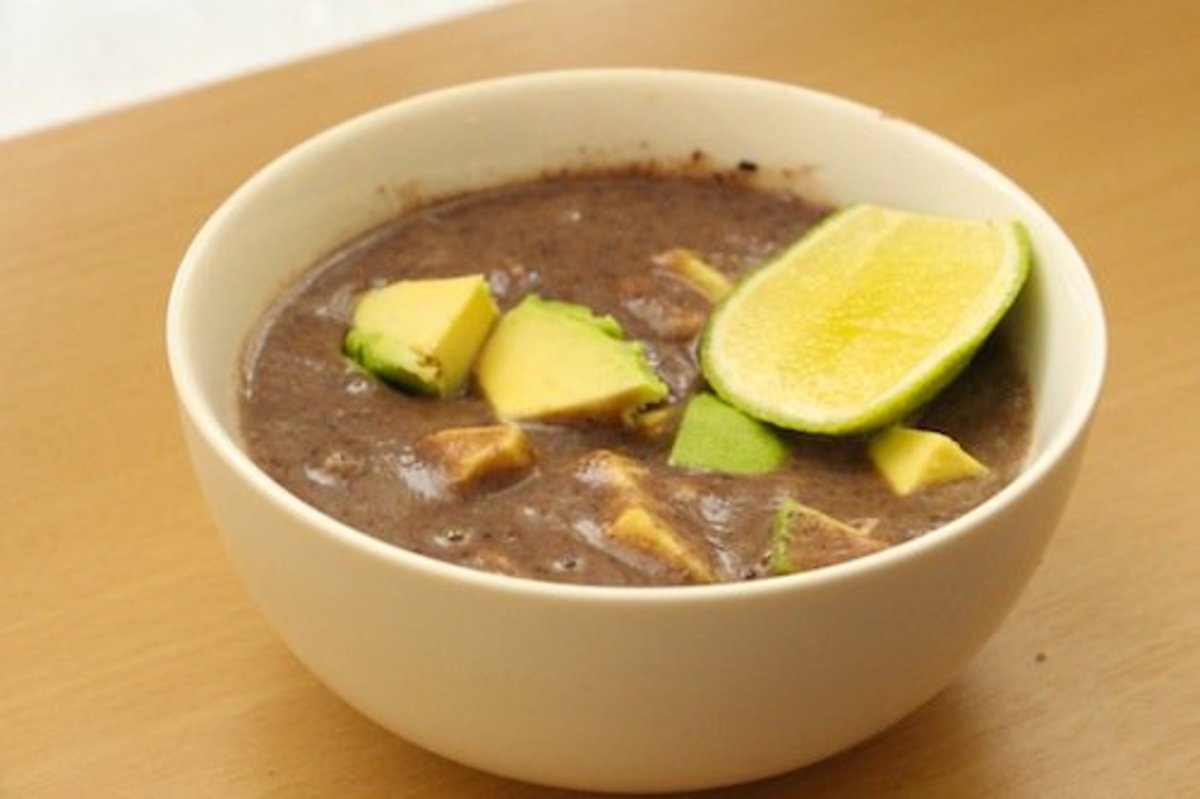
As far as vegetarian sources of protein go, black beans are a fantastic option. Like other beans and legumes, black beans are also a great source of fiber and antioxidants, and they have been attributed with health benefits linked to improved digestion, heart health, decreased cancer risk, weight loss, and more. But on top of that, black beans are also just plain delicious and striking on the plate with their rich, dark color. We’ve rounded up four of our favorite vegetarian black bean recipes, just in time for Meatless Monday.
This black bean hummus is a lovely choice as either a dip or a sandwich spread. The hummus itself is flavored with tahini, lime juice, and cumin, along with a touch of chili powder and some fresh cilantro. This combo of flavors takes a few cues from traditional hummus, with the tahini and some fresh garlic, but it also features some ingredients more commonly used in Mexican-influenced vegetarian black bean recipes, including the cumin, chili powder, and lime juice. Serve this either with dippers, like your favorite crackers and crudités, or as a base for open-faced tartines that you can assemble at the table, with your favorite bread, sliced veggies, and lettuce.

Image by Emily Monaco
Puréed black beans make the thick and flavorful base of this spiced black bean soup, which is rich, creamy and vegan. One of the secrets is starting with a base of perfectly cooked black beans; don’t soak them before cooking them, and you’ll end up with an even richer color. Avocado adds even more creaminess to the soup and forms a foil for the spices, which include ancho chile powder, cumin, and coriander.

Black bean burritos image via Shutterstock
These black bean burritos have not one but two vegetarian sources of protein in the filling: quinoa and black beans. Cook your own organic black beans with cumin and chili powder for even more flavor (and to stay away from BPA in canned foods). While cheese is an option, with the vegetables, corn, spices, and cilantro-lime scented quinoa, you’ll probably find you don’t need or want it. If you do want to add something a little bit creamy to the finished dish, homemade guacamole is a great option.

Image: John Klein
These black bean burgers are gluten-free and rich in protein, as quinoa is featured in the burger mix itself in place of the more traditional breadcrumbs. They’re also extremely flavorful, with cilantro, red onion, jalapeño, coriander, cumin, and ancho chile. Served with avocado and blistered kale, these burgers are just as rich in nutrients as they are in flavor.
Organic Bean is available to purchase at SFMart.com
This article is originally posted on Organic Authority
























